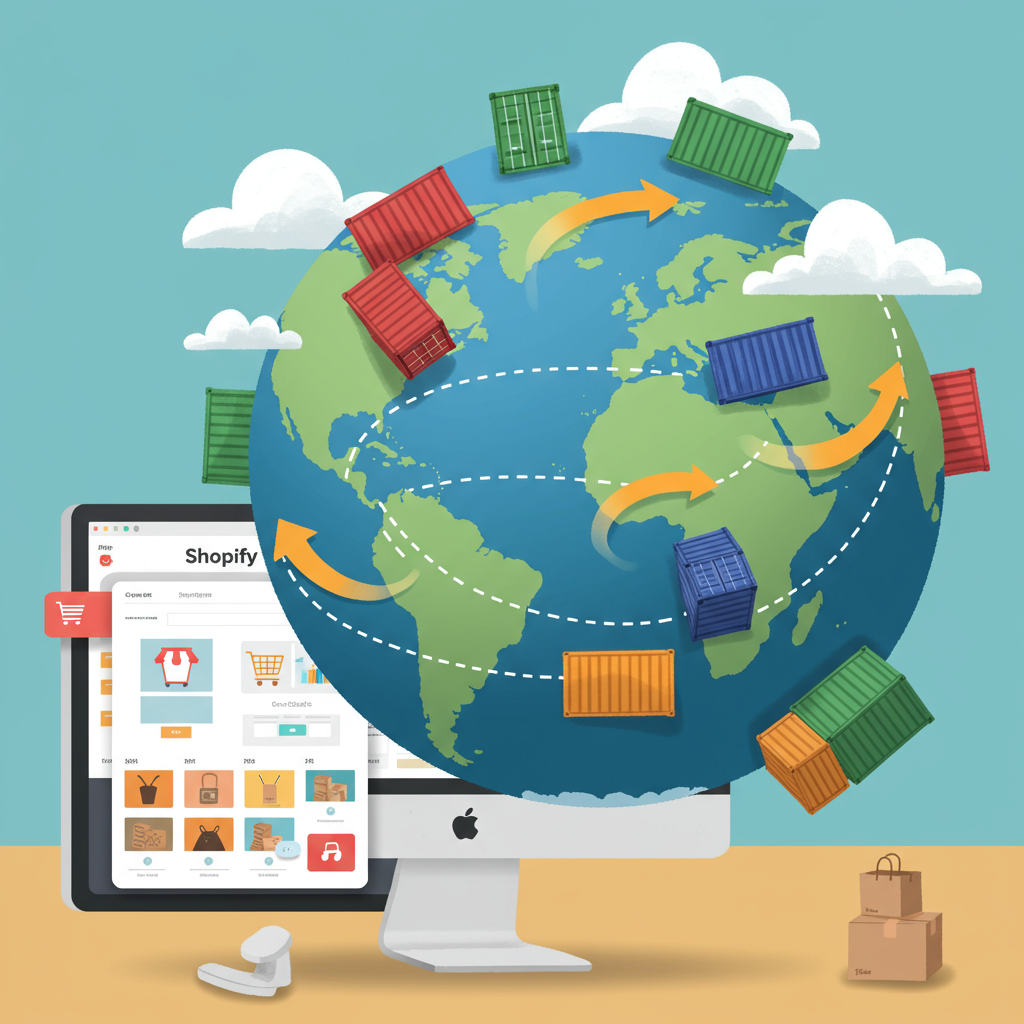Unlocking International Growth: A Comprehensive Strategy for Shopify Merchants
As a Shopify merchant, you’re likely always looking for ways to expand your reach and grow your business.
One of the most exciting, yet often daunting, avenues for growth is venturing into international markets.
I’ve seen firsthand how a well-executed international shipping strategy can unlock incredible opportunities for online stores.
It’s not just about slapping a label on a box; it’s about understanding a complex ecosystem of logistics, regulations, and customer expectations.
Today, I want to share my insights and a comprehensive guide to building a robust Shopify shipping strategy for your international orders.
My goal is to help you navigate the complexities and turn global shipping into a competitive advantage.
The first step in any successful international expansion is thorough research and planning.
You need to identify which countries offer the best potential for your products. Consider market demand, competition, and local purchasing power.
I always recommend looking into import restrictions and prohibited items for each target country. What’s legal to ship domestically might be banned elsewhere.
Next, let’s talk about shipping carriers. You have several major players to choose from, each with their own strengths and weaknesses.
Companies like DHL, FedEx, UPS, and even national postal services (like USPS, Royal Mail, Canada Post) offer a range of international services.
I typically evaluate them based on speed, reliability, tracking capabilities, and, of course, cost. Sometimes a combination of carriers works best.
For instance, a premium carrier for express shipments and a more economical option for standard delivery can cater to different customer needs.
Setting your shipping rates is another critical decision. You can opt for flat rates, calculated rates, or even offer free international shipping.
I find that calculated rates, often integrated directly with Shopify and your chosen carrier, provide the most accurate and fair pricing for customers.
However, if your products have a consistent weight and size, a tiered flat rate based on order value or weight might simplify things for your customers.
Remember, transparency is key here. Hidden fees or unexpected charges at checkout are a major cause of abandoned carts.
Perhaps the most intimidating aspect of international shipping is customs and duties. This is where many merchants get tripped up.
You need to understand the difference between Delivered Duty Paid (DDP) and Delivered Duty Unpaid (DDU).
With DDU, the customer is responsible for paying duties and taxes upon delivery, which can lead to unpleasant surprises and refusal of packages.
I strongly advocate for DDP whenever possible. This means you, the merchant, collect the duties and taxes at checkout and remit them.
Shopify apps and third-party services can help you calculate and collect these fees seamlessly, ensuring a smooth customer experience.
Proper customs documentation, including commercial invoices and accurate HS (Harmonized System) codes for your products, is non-negotiable.
Incorrect documentation can lead to delays, fines, or even seizure of your goods. I always double-check this.
Packaging and labeling also require special attention for international orders. Your packaging needs to withstand longer transit times and more handling.
Ensure all labels are clear, legible, and include all necessary customs information.
What do you think about this article so far? I’m curious to hear your thoughts on these strategies.
Returns and exchanges for international orders can be complex, but having a clear policy is crucial.
I recommend outlining your international return process clearly on your website, including who pays for return shipping and any potential customs implications.
Leveraging Shopify’s capabilities and apps is essential. Many apps can help with duty calculation, label generation, and even finding fulfillment partners.
Configure your Shopify shipping zones carefully, setting specific rates and rules for each international region you serve.
Finally, effective customer communication throughout the shipping process is paramount.
Provide tracking information promptly and proactively inform customers of any potential delays or customs requirements.
Building a successful international shipping strategy for your Shopify store is an ongoing process of learning and optimization.
By focusing on research, choosing the right partners, being transparent about costs, and mastering customs, you can confidently expand your global footprint.
I believe that with these strategies, you’ll be well-equipped to serve customers worldwide and unlock new levels of growth for your business.






